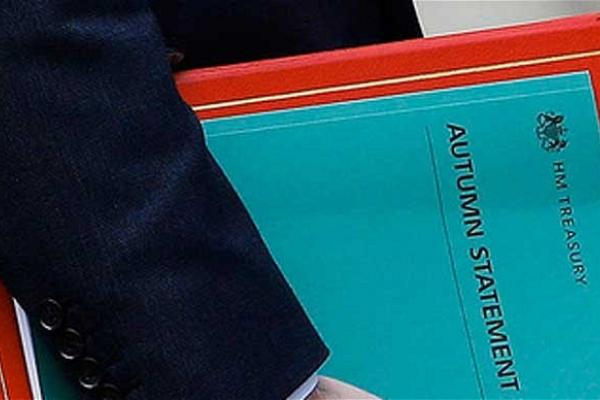The cuts set out in the Spending Review were less harsh than anticipated but, says David Eiser, the Scottish Government faces a tighter fiscal squeeze over the next four years than it has done in the last five.
Much has been made of the fact that the cut to so-called ‘resource DEL’ – day-to-day spending on public services – set out in the Autumn Statement was not as severe as had been expected. Between 2015/16 and 2019/20, UK RDEL is expected to fall by 3.3%. This is less than the cut of 5.6% set out in July Budget, which in turn was less than the cut of 9.5% set out in the March Budget.
The grant to the Scottish Government for resource spending will fall by 5% in real terms over the course of the parliament.
The idea that austerity is over is clearly false. Between 2010/11 and 2015/16, the Scottish RDEL block grant fell at an annualised rate of 1% per year in real terms. But the cut to the Scottish Government’s RDEL grant over the period to 2019/20 is equivalent to an annualised cut of 1.3%. So the Scottish Government actually faces a slightly tighter spending squeeze over the next four years than it has during the past five.
During the last parliament, we got used to the idea that the Scotland’s RDEL block grant would not be squeezed to the same extent as total UK RDEL spending. This occurred because of the pattern of cuts across UK Government departments – spending on health and education was afforded relatively greater protection, generating ‘consequentials’ for the Scottish grant. And, during the last parliament, a quirk in the Barnett Formula used to calculate Scotland’s grant meant that the Scottish budget was effectively protected from a proportion of the substantial cuts to local government in England. If this quirk had not been in place, the Scottish RDEL budget would have been £0.6bn lower in 2015/16 than it is. The implication would have been that the Scottish RDEL grant would have declined by 1.4% on an annualised basis.
During this parliament, several of the UK departments that will experience the largest increases in RDEL spending do not generate any consequentials for the Scottish budget – defence, intelligence, international development. And the Barnett Formula quirk has been corrected, which means that the Scottish budget will now be exposed to a population share of cuts to local government in England.
Of course, it will be up to the Scottish Government to decide how to spread the cut to its block grant across its spending priorities. Presumably, the Scottish Government will want to protect health spending to at least the same extent that it is protected in England. This means that health spending will rise by 3.3% in real terms over the course of the parliament.
Health spending now accounts for a staggering £11.8bn of the Scottish Government’s £26bn RDEL budget. Increasing spending on health by 3.3% in real terms over the course of the next four years would mean that the remaining part of the Scottish Government’s RDEL budget would fall by 12% in real terms over the course of the parliament. If, additionally, the Scottish Government chose to maintain real terms spending on education, and increased grant to local authorities to support this, then the remaining RDEL budget would fall by 14% in real terms.
There a number of other RDEL spending commitments the Scottish Government might want to try to protect in real terms. These might include the £80m per year it is spending to mitigate welfare cuts by the UK Government (including the bedroom tax and the cut to Council Tax Reduction), and the £280m it has committed in 2015/16 for childcare. This list is certainly not exhaustive. The more of these items that the Scottish Government wants to protect in real terms, the faster will the SG’s remaining budget fall for anything else (which might include local government, policing, universities, the environment, etc.).
In this context, decisions over taxation take on added significance. For each year that it has frozen council tax, the Scottish Government has transferred an additional £70m from its budget to local authorities, to compensate them for the loss of revenue (so this compensating payment had reached £0.5bn by 2015). This additional £70m is probably more than is strictly necessary to compensate local authorities for the freeze, particularly in today’s low inflation environment. Interestingly, the cost to the Scottish Government of funding the Council Tax freeze since 2010 is broadly equal to the amount by which it benefitted from the Barnett flaw over this period. Will the correction to the Barnett flaw trigger the end of the freeze?
In a similar vein, the Scottish Government will in 2015/16 transfer resources to local authorities in Scotland to compensate them for the 2% cap in Non-Domestic Rates that it imposed (rather than allowing the 2.3% increase that would have applied had rates been increased with inflation). Scottish local authorities will soon gain the power to cut business rates, but not to increase them.
Regardless of the merits of the specific decisions to freeze council tax or cap non-domestic rates increases, it goes without saying that the further these policies are taken, the more it constrains commitments on the spending side.
Until now, the Scottish Government has been reluctant to commit to tax increases (or even maintaining tax rates in real terms), and it has been reluctant to commit to increasing rates of income tax, once these are devolved. But it may find this policy increasingly difficult to justify while maintaining its existing spending commitments, and its claim as being the anti-austerity party.

